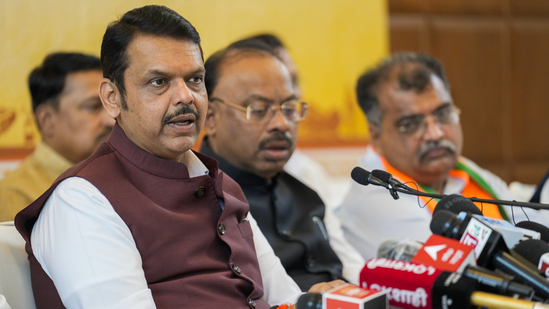
Mumbai, June 29, 2025 – In a dramatic reversal, the Maharashtra government, led by Chief Minister Devendra Fadnavis, on Sunday revoked two contentious government resolutions that sought to make Hindi the default third language for students from Classes 1 to 5 in Marathi- and English-medium schools. This decision comes after mounting protests orchestrated by Uddhav Thackeray’s Shiv Sena (UBT) and Raj Thackeray’s Maharashtra Navnirman Sena (MNS), who accused the government of “imposing” Hindi over Marathi—the mother tongue of the state.
The U-turn: What Changed?
The trouble began with an April 16 resolution that mandated Hindi as the third language in primary schools. While Marathi and English remained compulsory, Hindi was set to be introduced from Class 1. A June 17 corrigendum softened this policy, making Hindi “generally” the third language, but allowed schools to teach an alternate Indian language only if at least 20 students opted in. Despite the tweak, backlash persisted .
On June 29, CM Fadnavis announced the complete withdrawal of both resolutions. He emphasized Marathi would always remain compulsory and declared a new committee, headed by former Rajya Sabha MP Dr Narendra Jadhav, would be set up to draft a kinder, more inclusive three-language policy in line with the National Education Policy (NEP) framework .
“Marathi and the Marathi student are at the center of our policy,” Fadnavis affirmed, asserting that the rollback was in response to the public mood and was never about retracting due to political pressure
The Thackeray Pushback and Protest Movement
The reversal coincided with fierce mobilization by both Thackeray brothers. Uddhav Thackeray, whose Shiv Sena (UBT) led fiery protests across Mumbai, urged Marathi citizens to rise against the move. At Azad Maidan on June 29, protestors symbolically burned copies of the June 17 GR and asserted they respect Hindi—but reject its imposition .
In a fiery Marathi-language speech, Uddhav described the Fadnavis government as “Marathi‑bhasha‑virodhi” (anti-Marathi) and a “factory of rumours,” accusing them of caving in to central influence—though he celebrated the policy U‑turn as a victory of the “Marathi manoos” .
Meanwhile, Raj Thackeray’s MNS aligned with UBT, and together they announced a joint protest slated for July 5 in Mumbai. Their united front underscored the charged political terrain, weaving together regional pride and linguistic identity.
Broader Political Ripples
Deputy Chief Minister Ajit Pawar and coalition partner Eknath Shinde backed the rollback. Pawar, who earlier had opposed making Hindi compulsory, urged people to stand down in light of the government’s withdrawal .
Union Minister Ashish Shelar also weighed in, stressing that Hindi was never mandatory under NEP 2020 and that prior stipulations originated during the Congress and earlier Thackeray-led state governments .
Nevertheless, Fadnavis made a pointed remark: “I wish the Thackerays good luck if they proceed with their protest,” a veiled jab at the political optics of their “unity”.
Why Language Matters in Maharashtra
Language disputes are deeply rooted in Maharashtra’s political culture. Since its formation, the state has fiercely defended Marathi identity—an ethos championed by Shiv Sena founder Bal Thackeray. The 2008 anti‑North Indian sentiment, led by Raj Thackeray, remains vivid in collective memory .
The recent episode is the latest flashpoint in battles over whether non-Marathi languages—especially Hindi—should be introduced at lower school levels. Supporters argue that multilingual education strengthens national integration and cognitive growth, while critics view compulsory Hindi as cultural dilution or even political imposition.
What’s Next: The Expert Panel
The newly announced Jadhav-led committee carries enormous weight. Tasked with crafting a balanced framework, it will consult stakeholders including parents, educators, language experts, and political leaders across the spectrum. Its report is expected within three months, and implementation of any policy change will be deferred until then .
CM Fadnavis emphasized the ultimate goal: follow the NEP while ensuring Marathi remains central to education in Maharashtra.
Implications for Students and Schools
For now, the status quo remains: Marathi and English compulsory, no compulsory third language in Classes 1–5. Schools will have a clear mandate once the committee submits its recommendations. Until then, uncertainty lingers among parents and teachers, particularly in institutions that were preparing to hire Hindi-language instructors or revamp their curriculum.
Conclusion
By rescinding the Hindi-language resolutions, the Maharashtra government has momentarily defused a potent protest led by the influential Thackeray brothers. But the issue underscores deeper tensions—between regional identity and national integration, between political expediency and educational policy. As the Jadhav panel takes charge, Maharashtra must walk a fine line: embrace multilingualism without undermining the linguistic heritage that binds its people together.
Thanks for Reading